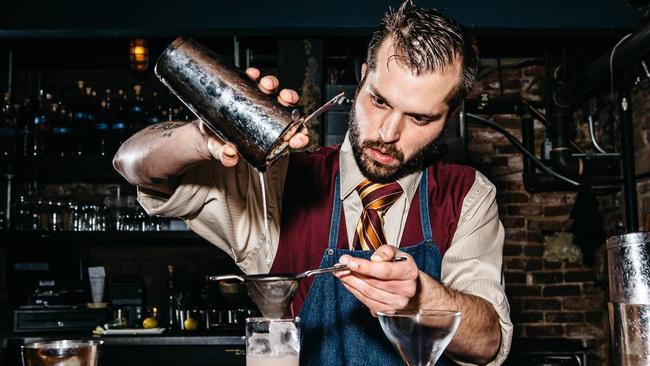Barbers, butchers and bartenders graduating to gentrification
Service industry jobs now have a new appeal to those who like to display their expertise before their customers.

Gentrification isn’t just taking place in working-class neighbourhoods. It’s happening to jobs, too.
Walk around parts of Brooklyn, Portland or Pittsburgh, and you’ll find stylish cocktail bars, barbers and the occasional butcher shop staffed by young, college-educated employees. For an affluent segment of today’s urban economy, these jobs have been revalued from low-status semi-manual labour to glamorous occupations, says sociologist Richard Ocejo.
In his new book, Masters of Craft: Old Jobs in the New Urban Economy, Ocejo examines forces driving a resurgence of occupations such as butcher and bartender among young middle-class urbanites. A similar dynamic is at work with a handful of other jobs, including craft brewer, bookbinder, furniture maker and fishmonger.
The US Labour Department projects that between 2014 and 2024 the number of bartenders and barbers in the US will grow 10 per cent, while butchers will see a 5 per cent rise, compared with 7 per cent job growth for all occupations in the same period. Median pay for these jobs was less than $US30,000 ($40,000) a year last year.
Millennials are drawn to these occupations, in part, as a reaction to “the ephemerality of the digital age”, says Ocejo, a sociology professor at John Jay College of Criminal Justice and the City University of New York Graduate Centre.
Distinct from many of today’s most vaunted jobs in fields such as information technology and financial services, these trades “are based in using your hands, with actual tools and materials, to provide a tangible concrete product”, he says.
To attract young people with college degrees and other options in the labour market, jobs usually have an element of performance to them, Ocejo says. In most of the careers he studied for Masters of Craft, workers interact closely with customers, often in a public setting where their skill and knowledge can be admired.
Unlike real estate gentrification, where the arrival of more affluent people displaces lower-income residents in a neighbourhood, hipsters generally aren’t displacing workers at more conventional businesses in the same industry, Ocejo says.
A trendy whole-animal butcher isn’t pushing out the local butcher shop, he says, since it probably “closed a long time ago when the Italians moved out”.
“They’ve created a niche that didn’t exist before, and they’re operating along parallel but very, very separate paths” with established businesses, Ocejo says.
But with aesthetics playing such a key role in the craft-business ideal — from bartenders with suspenders and handlebar moustaches to tattooed butchers carving an unusual cut of meat — Ocejo says the jobs tend to attract people from similar cultural backgrounds, creating a barrier for others.
“It’s very difficult if you are from a working-class background or a minority to get one of these jobs, which would give you higher wages, networking opportunities and more interesting work,” he says. “That’s a challenge for these companies: to become more inclusive and not just hire people who look like them or are part of their social network.”
The Wall Street Journal


